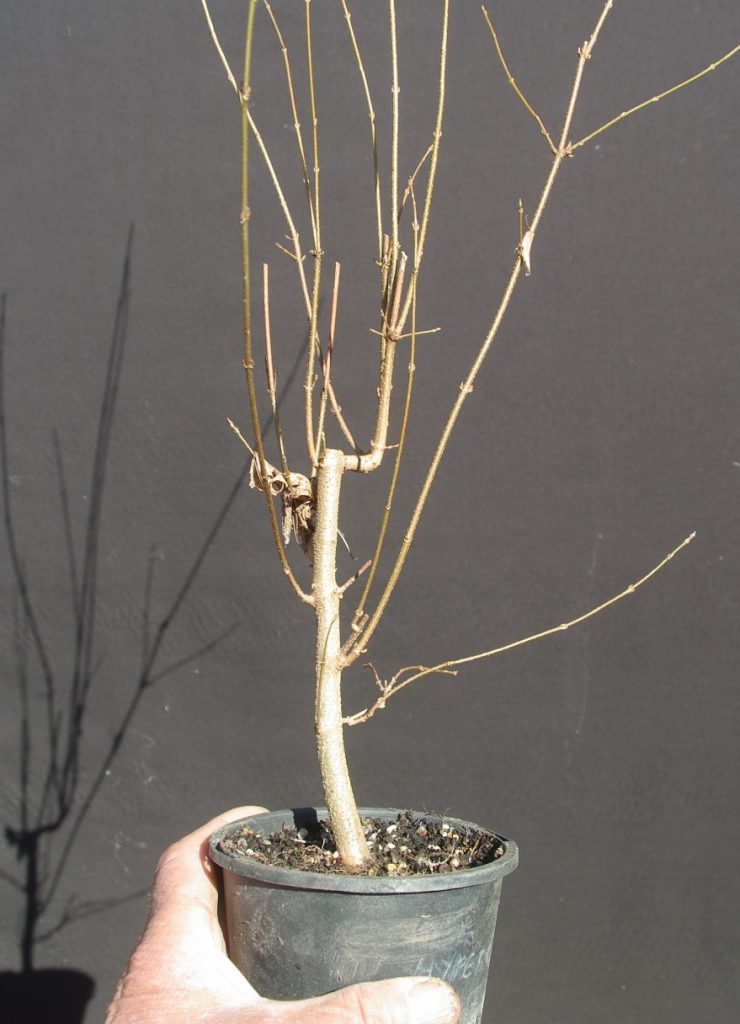A number of customers have pointed out that the old catalogues appeared to be out of date because they were titled 2020. Shibui Bonsai years are designed to fit in with tree seasons rather than our traditional calendar.
Field grown trees are dug from the grow beds in winter – That’s July and August here – then pruned and potted up. Some new dug trees may be available as bare root but as I have no control over your subsequent care and conditions bare root trees are not covered by the standard Shibui Bonsai guarantee.
Fresh potted trees are hard to pack and post with no roots to hold the soil together so I delay sales until the trees have started growing and have plenty of new roots in the pots. The tridents are generally ready to cope with mailing by December so that’s when the new catalogues are posted (provided I’ve managed to find the time and energy to take all the photos and compile the catalogue files). By that time i can be sure that the trees have recovered well from the trauma of transplant and the massive root reduction that entails so you can be assured of getting strong, healthy trees with the traditional Shibui Bonsai guarantee.
The catalogues on the catalogue pages are current right through to the following November but the later you are the less trees will still be available.
Good bonsai are not like many other retail goods – I can’t just get more from the factory to fill the shelves because bonsai growing is seasonal so we must learn to fit in with the annual and seasonal growth patterns. New trees are only added each year in December.
offerings of trident maples are good again this season but there were no Chinese Elms ready for sale this time.
The few pines and junipers I potted up have all been sold (provided they recover and grow well) before going in a catalogue.
I’ve only potted up 2 field grown Japanese maples – catalogue still in progress at this stage but should be posted soon.
There are also a few Prunus ‘Elvins’ from the grow beds along with a couple of feral plums collected locally. Catalogues will be up as soon as the weather allows me time to take photos and compile the catalogue so, if you are keen on great flowering bonsai, keep an eye out for that one soon.
Enjoy the new offerings.
Neil










